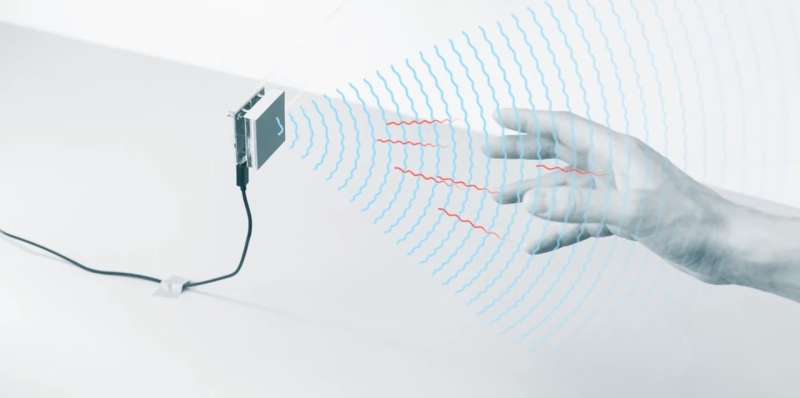January 3, 2019 weblog
Project Soli's hands, not touchscreens, give new meaning to digital future

Google has been given some key green lights by the US Government for its radar-based motion sensor. The nods now place Project Soli in a stronger light. The FCC's waiver for Project Soli has kicked the project up a notch, said Fast Company.
Specifically, in an order the FCC said it would grant Google "a waiver," said Reuters, to operate the sensors at higher power levels than currently allowed.
Eric Limer, Popular Mechanics, said the FCC has given Google a waiver to allow its Soli tech to operate the 57-64-GHz frequency band.
Fast Company called Soli Google's "wearable radar project."
"Project Soli's goal is to build a tiny radar system on a chip that can be used to detect hand gestures made above a device," said Ron Amadeo in Ars Technica.
This is no small ambition and the results will be quite interesting in how we interact with technology in the future. Imagine where the hand, not a touchscreen, becomes your frequent daily communication tool.
The Soli chip incorporates the sensor and antenna array into an 8mm x 10mm package. TechSpot's Greg Synek said, "Google engineers went through numerous iterations before condensing the system down to an 8mm by 10mm chip complete with integrated antennas operating in the 60GHz ISM band."
The Soli site detailed its progress over time. "The Soli sensor is a fully integrated, low-power radar operating in the 60-GHz ISM band. In our journey toward this form factor, we rapidly iterated through several hardware prototypes, beginning with a large bench-top unit built from off-the-shelf components—including multiple cooling fans. Over the course of 10 months, we redesigned and rebuilt the entire radar system into a single solid-state component that can be easily integrated into small, mobile consumer devices and produced at scale."
The commission said the sensors could be operated aboard aircraft (but must comply with Federal Aviation Administration rules governing portable electronic devices.)
What does the sensor do and who benefits?
The Soli sensor captures motion in a three-dimensional space, using a radar beam to enable touchless control of functions or features, said David Shepardson in Reuters. Feedback is generated by a haptic sensation of fingers touching. Touchless? Yes. This technology features control by hand gestures.
Users press an invisible button between the thumb and index fingers, say, or a virtual dial that turns by rubbing a thumb against the index finger, said Shepardson.
Yet another action would be grabbing and pulling a virtual slider in thin air. Users with mobility or speech impairments could find this helpful. Daily Mail walked readers through some technical points about Soli: Project Soli uses radar to recognize movement, velocity and distance.
Melissa Locker in Fast Company thought of another reason why the technology could matter. If you wake up in the middle of the night thinking about your phone which may have 10 times more bacteria than a toilet seat, she said, then "Google has a potential solution you'll love."
Meanwhile, a June article in Electronics Weekly.com was a reminder that Project Soli had broad potential in applications. This time, Soli was highlighted in a medical context, helping diabetics toward a solution other than finger pricking.
"Instead of finger pricking, a miniature radar might one day tell diabetics what their blood-sugar level is, according to the University of Waterloo in Canada." The article quoted Prof. George Shaker. "Our hope is this can be realised as a smart watch to monitor glucose continuously."
According to Daily Mail, chips were developed with the manufacturer Infineon.
Electronics Weekly.com said both Google and Infineon were participating in the Waterloo research. The purpose was to investigate dielectric properties of samples that mimic blood glucose concentrations in diabetics. It involved "bouncing radio waves within the samples, and then using artificial intelligence to un-pick data from the returns."
As for the varied uses, the sensor can be embedded in wearables, phones, computers and vehicles. (Locker said it is small enough to fit into a 1.5-inch smartwatch.)
Soli was created by Google's Advanced Technology and Projects group, or ATAP. This group focuses on mobile technologies developments. An older 2015 ATAP video that welcomes viewers to its Project Soli showed Ivan Poupyrev, Project Soli founder. He said capturing the possibilities of the human hand was one of his passions. His team used radars to track the human hand.
What's next? Well, Daily Mail said the Soli project was, after this wave of US approval, "one step closer to reality."
© 2019 Science X Network
















